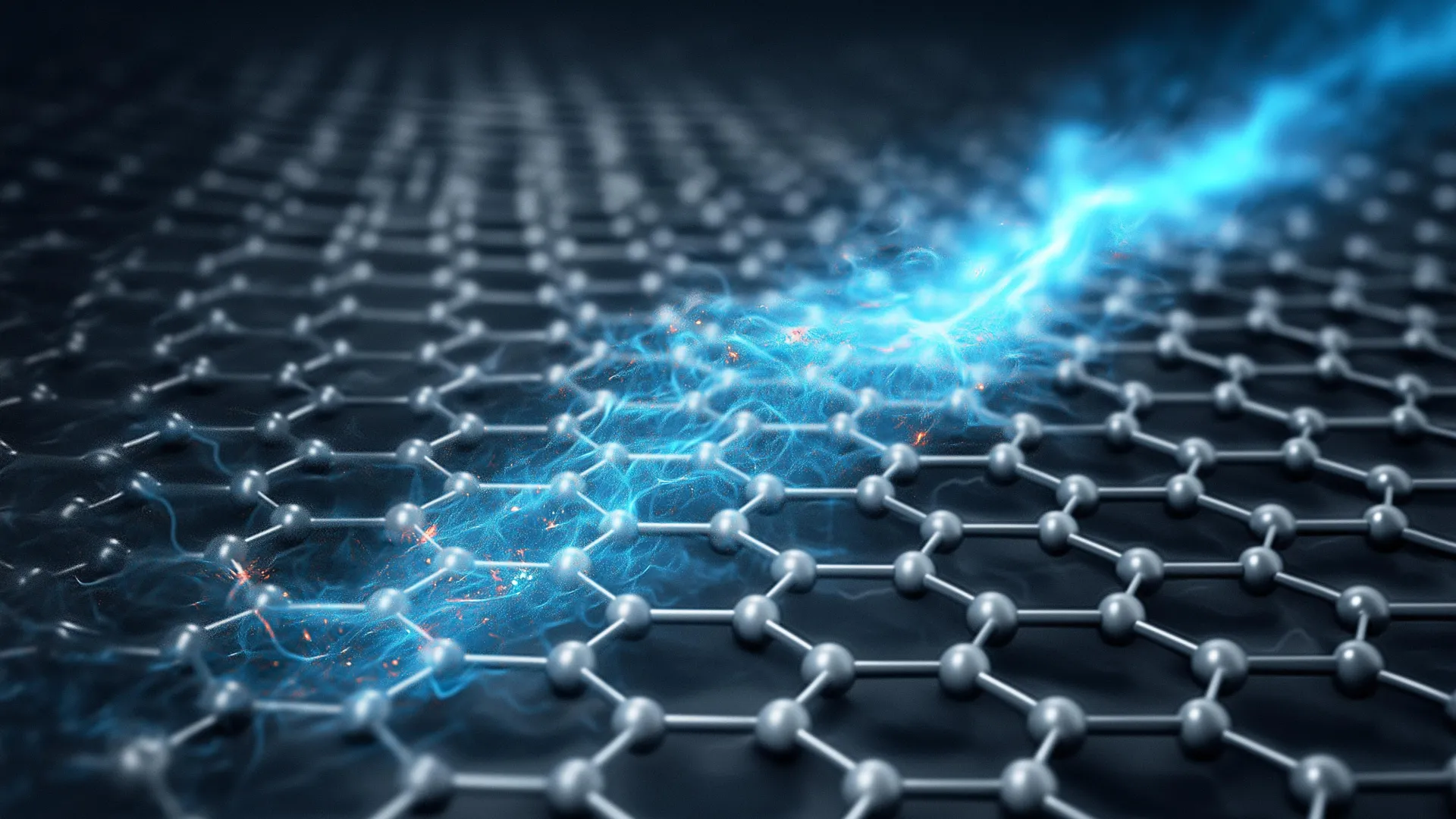Graphene just broke a fundamental law of physics
- Date:
- September 12, 2025
- Source:
- Indian Institute of Science (IISc)
- Summary:
- For the first time, scientists have observed electrons in graphene behaving like a nearly perfect quantum fluid, challenging a long-standing puzzle in physics. By creating ultra-clean samples, the team at IISc uncovered a surprising decoupling of heat and charge transport, shattering the traditional Wiedemann-Franz law. At the mysterious “Dirac point,” graphene electrons flowed like an exotic liquid similar to quark-gluon plasma, with ultra-low viscosity. Beyond rewriting physics textbooks, this discovery opens new avenues for studying black holes and quantum entanglement in the lab—and may even power next-gen quantum sensors.
- Share:

For several decades, a central puzzle in quantum physics has remained unsolved: Could electrons behave like a perfect, frictionless fluid with electrical properties described by a universal quantum number? This unique property of electrons has been extremely difficult to detect in any material so far because of the presence of atomic defects, impurities, and imperfections in the material.
Researchers at the Department of Physics, Indian Institute of Science (IISc), along with collaborators from the National Institute for Materials Science, Japan, have now finally detected this quantum fluid of electrons in graphene - a material consisting of a single sheet of pure carbon atoms. The results, published in Nature Physics, open a new window into the quantum realm and establish graphene as a unique tabletop laboratory for exploring hitherto unseen quantum phenomena.
"It is amazing that there is so much to do on just a single layer of graphene even after 20 years of discovery," says Arindam Ghosh, Professor at the Department of Physics, IISc, and one of the corresponding authors of the study.
The team engineered exceptionally clean samples of graphene and tracked how these materials conduct electricity and heat simultaneously. To their surprise, they discovered an inverse relationship between the two properties: as one value (electrical conductivity) increased, the other (thermal conductivity) decreased, and vice versa. This remarkable phenomenon arises from the dramatic violation of a textbook principle for metals, the Wiedemann-Franz law, which dictates that the values of electrical and thermal conductivity should be directly proportional.
In their graphene samples, the IISc team observed a strong deviation from this law by a factor of more than 200 at low temperatures, demonstrating the decoupling of charge and heat conduction mechanisms. This decoupling, however, is not a random event - it turns out that both charge and heat conduction in this case rely on a material-independent universal constant which is equal to the quantum of conductance, a fundamental value related to the movement of electrons.
This exotic behavior emerges at the "Dirac point," a precise electronic tipping point - achieved by tweaking the number of electrons in the material - where graphene is neither a metal nor an insulator. In this state, electrons cease to act as individual particles and instead move together the way a liquid does, just like water but a hundred times less viscous. "Since this water-like behaviour is found near the Dirac point, it is called a Dirac fluid - an exotic state of matter which mimics the quark-gluon plasma, a soup of highly energetic subatomic particles observed in particle accelerators at CERN," says Aniket Majumdar, first author and PhD student at the Department of Physics. The team additionally measured the viscosity of this Dirac fluid and found it to be minimally viscous, the closest possible to a perfect fluid.
The findings establish graphene as an ideal low-cost platform for investigating concepts from high-energy physics and astrophysics, such as black-hole thermodynamics and entanglement entropy scaling, in a laboratory setting.
From a technological perspective, the presence of Dirac fluid in graphene also holds significant potential for use in quantum sensors capable of amplifying very weak electrical signals and detecting extremely weak magnetic fields.
Story Source:
Materials provided by Indian Institute of Science (IISc). Note: Content may be edited for style and length.
Journal Reference:
- Aniket Majumdar, Nisarg Chadha, Pritam Pal, Akash Gugnani, Bhaskar Ghawri, Kenji Watanabe, Takashi Taniguchi, Subroto Mukerjee, Arindam Ghosh. Universality in quantum critical flow of charge and heat in ultraclean graphene. Nature Physics, 2025; DOI: 10.1038/s41567-025-02972-z
Cite This Page: